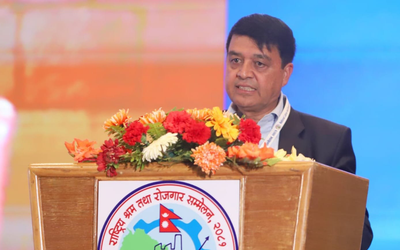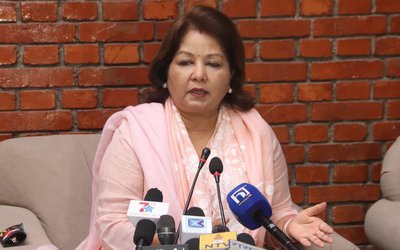
In spite of significant disruptions to Nepal's power infrastructure, including damage to power plants and transmission lines due to severe flooding in October, the NEA has managed to export electricity worth Rs 12.72 billion to India.
Kul Man Ghising, the Managing Director of NEA, has remained steadfast in his commitment to exporting surplus energy, even amidst ongoing criticism from Prime Minister KP Sharma Oli and Minister of Energy, Water Resources and Irrigation, Deepak Khadka.
Both PM Oli and Minister Khadka have exerted pressure on MD Ghising, urging him not to sever power supply to major industrial clients who have accrued debts exceeding Rs 12 billion to the NEA for utilizing dedicated feeders during load-shedding periods.
As they have been unable to leverage the Public Account Committee, the Commission of Investigation of Abuse of Authority (CIAA), the courts, and other institutions to remove MD Ghising for his refusal to comply with their directives regarding debt collection, they are now attempting to utilize a Commission of Inquiry to suspend him from his position.
In spite of this antagonism and lack of cooperation from the government and ministry, MD Ghising is diligently pursuing all necessary measures to maintain the momentum of electricity exports to India.
In the first quarter of the ongoing fiscal year, Nepal exported electricity valued at Rs 12.72 billion to India. The Nepal Electricity Authority (NEA) reported that a total of 1,667,892,000 units of surplus electricity, generated during the rainy season, were sent to India at a unit price of Rs 7.63.
The NEA is marketing this surplus power to the Indian states of Haryana and Bihar through the Day Ahead and Real Time Market of the Indian Energy Exchange (IEX), in accordance with a competitive rate established under the bilateral Medium Term Power Sale Agreement.
Additionally, Nepal has commenced electricity supply to Bangladesh utilizing Indian infrastructure.
Kulman Ghising, Managing Director of the NEA, indicated that the exports have been adversely impacted due to severe rains on September 27-28, which led to floods and landslides that damaged hydropower facilities and transmission lines. Currently, power generation from the 456-megawatt Upper Tamakoshi project has been halted due to landslide damage.
The adverse weather conditions have also affected several smaller projects. Furthermore, the Kabeli Corridor Transmission Line sustained damage from flooding caused by the Mai River, leading to the suspension of approximately 200 megawatts of power from various connected projects. This situation has hindered power exports over the past two months and is expected to impede the government's goal of supplying around Rs 30 billion worth of electricity in the current fiscal year.
At a time when Nepal's trade deficit with India is widening, exporting surplus electricity and earning from the Indian market is a success for Nepal.
- ADB’S CHIEF ECONOMIST: Nepal Reduces Poverty
- Mar 11, 2025
- FM DR. DEUBA: A Successful Visit
- Mar 11, 2025
- MD GHISING: Target Of Personal Grudge
- Mar 09, 2025
- UPPER TRISHULI-1 HYDROPOWER: Supporting Community Development
- Feb 24, 2025
- ADB POWERING NEPAL: Five Decades Of Support
- Feb 24, 2025















